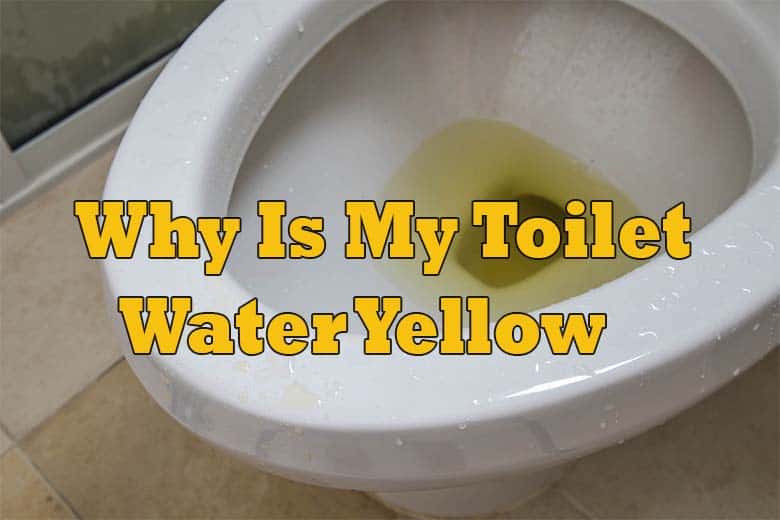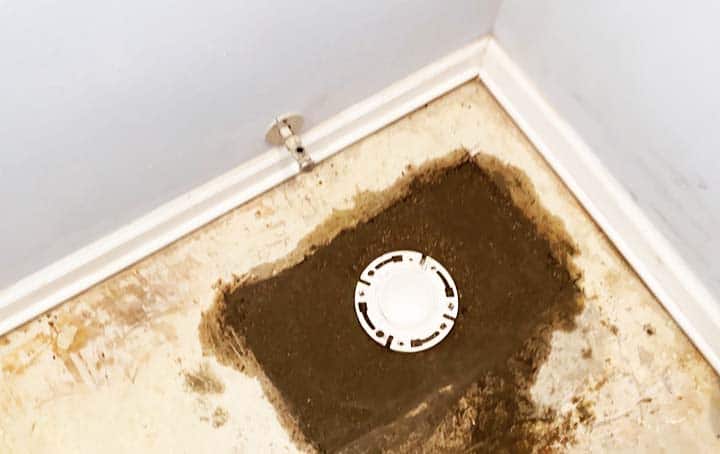Let’s admit it; we all want our toilets to be as clean as possible. In fact, some people will go a few steps further to maintain cleanliness in their toilets. Yet, we will see our toilet having yellow water at some moments, even after flushing it properly. Hence we keep receiving questions like, “Why is my toilet water yellow?”
While most people think that yellow toilet water occurs when people don’t flush their toilet properly after use, the main culprit might be iron and mineral deposits. It happens if your water supply has hard water.
Also, seeing yellow water in your toilet might appear dangerous for the toilet. Thankfully, it doesn’t threaten the toilet bowl and setup, as you can get rid of the yellow toilet water. You can clean the mineral deposit and rust to keep your toilet water white and maintain cleanliness and hygiene.
Why is My Toilet Water Yellow: The Most Common Reasons Explained
It might appear pretty frustrating and pathetic when you experience toilet water yellow after flushing. At the first point, it destroys the look of your toilet bowl, and at the second point, it isn’t a pleasant feeling at all. So, naturally, you would want to eliminate the yellow water issue from the toilet bowl ASAP.
You need to learn the causes of yellow water in the toilet first. The following points will highlight the same with proper explanations.
Hard Water Residue and Minerals
If you live in a locality where the water supply contains hard water, it will affect the watercolor of your toilet. Hard water contains different minerals, and its residues will turn the toilet water yellow if not treated timely.
It happens especially when your toilet receives impure and poorly treated water from the main supply line. Sadly, it is a common cause for most homes worldwide.
Hard water and poorly treated water will contain chloride and magnesium. Both elements will turn the toilet water yellow if they contain a lot of flush water. When the minerals are less, it won’t impact the toilet water. As we described, the problem happens when water contains too many minerals, including magnesium and chloride.
Both chloride and magnesium react with water, so the watercolor turns yellow. It makes your toilet look ugly and dirty enough so that you might find it unhygienic and unpleasant to use the toilet.
Moreover, over time, the minerals will cling around the toilet wall. The longer it exists in the toilet bowl, the yellower the water in the toilet will be. On top of it, gradual build-up of minerals will accumulate in large quantities around the toilet wall. Hence, a portion of the accumulated mineral deposit will come from the wall when you flush the toilet. It turns the toilet water yellow, and it appears unclean and dirty.
Rust in iron pipes
Most older homes and even many modern-day homes have iron pipes as the main supply line across the household. Plumbers use cast iron pipes to construct the water supply line of most homes due to its expanded lifespan and sturdiness. However, cast iron is prone to rust, and the pipes will develop rust over the period.
Henceforth, if you see toilet water yellow after flushing and live in an old home, the problem is linked with the rusted iron pipes used for the water supply line.
When the inside of the iron-made water supply line starts rusting, it will develop gradually. Thus, the inside of the pipe will have rusted iron particles. Water runs through the pipe slowly accumulates the rust or iron particles. The iron particles are tiny and pretty brittle and easily break down when water runs through the pipes. After that, it runs along with the water.
When you flush the toilet after using these iron particles come in the toilet bowl with the flush water. So, your toilet will turn yellow. Moreover, the high presence of iron in supply water also transforms the toilet water yellow.
Rusted nuts and bolts
The final reason for yellow toilet water could be the rusted bolts. The toilet bowl and tank contain multiple bolts for secure attachment with the supply line and the bowl itself. When your toilet gets old, these nuts and bolts may catch rust due to inevitable reasons.
When the nuts and bolts attached to the toilet bowl and tank becomes too rusty, it will run into the toilet with the water. Thus, your toilet will look yellow even after a flush. When you flush the toilet after use, the rust on the nuts will flow with the water due to its fragility and turn the toilet yellow. So, you will experience a yellow tint inside the toilet.
How to Get Rid of Yellow Toilet Water
When you see toilet water turning yellow, it could be frustrating. Also, you might think that it is dangerous for the toilet. Although it is not dangerous for the toilet, it is unclean to some extent. So, you would want to remove the yellow appearance or tint from the toilet. Thankfully, it doesn’t require too much plumbing skill at all.
Clean the Rust:
We have already mentioned that rust nuts and bolts of the toilet setup are the primary reasons for the toilet turning yellow. So, cleaning the rusted nuts and bolts can eliminate the problem quickly.
You should open the lid of the toilet tank. Then, clean the bolts and pipe to remove the rust as much as possible. You can clean off the rust from the pipe and bolts using a hard-bristled brush with mild pressure.
You may also use commercial toilet cleaner to remove the rust. If the water supply line contains too much rust or it has become too old, you may call a plumber to fix the rust or change the pipeline if possible.
Clean the Mineral Deposit:
You should also clean the mineral deposit in the toilet if your water contains minerals such as chloride and magnesium. It will mainly accumulate around the wall and sides of the toilet bowl and tank. It is easy to locate, so you should be able to clean them up with ease.
You can clean the mineral deposit around the toilet tank and bowl using a brush or scrubber. Also, regular cleaning of the toilet with a commercial cleaning solution will prevent residual build-up from stopping your toilet from turning yellow.
Frequently Asked Question
- Is it OK to put bleach in the toilet tank?
No, you should never use bleach to clean the toilet tank. It can erode different parts in the toilet and may even eliminate the shine of the bowl.
- Can a water softener cause yellow water?
Yes, a water softener may cause yellow water in the toilet. If the water softener is dormant, it will likely cause yellow water inside the toilet.
- Is yellow water Harmful?
Although yellow water appears unhygienic and dirty, it is usually not dangerous for your toilet. It won’t corrode the different parts of the toilet. But if not treated timely, it will reduce the shine of the porcelain or tiles of the toilet bowl.
Final Words
The last thing you won’t want in your toilet is to see a yellow tint or water after flushing. It looks filthy and might leave the toilet unattainable for other people. Also, it gives a bad impression about the toilet user as people imagine that the toilet user has forgotten to flush the toilet.
But in reality, the scenario is pretty different. When you ask why is my toilet water yellow, you will learn that mineral and rust deposits around the toilet bowl, tank, and water supply line are the primary reason for the yellowness in the toilet. Thankfully, you can use a commercial cleaner and scrubber to remove the rust and mineral water residues to keep the toilet free from yellow water to maintain cleanliness and hygiene.
I am James Martin, An professional plumber with more than 16 years of experience. The main purpose of my writing is to share my experiences of helping others. Be with me and explore bathroom plumbing, installation, cleanness ideas, and many more.




